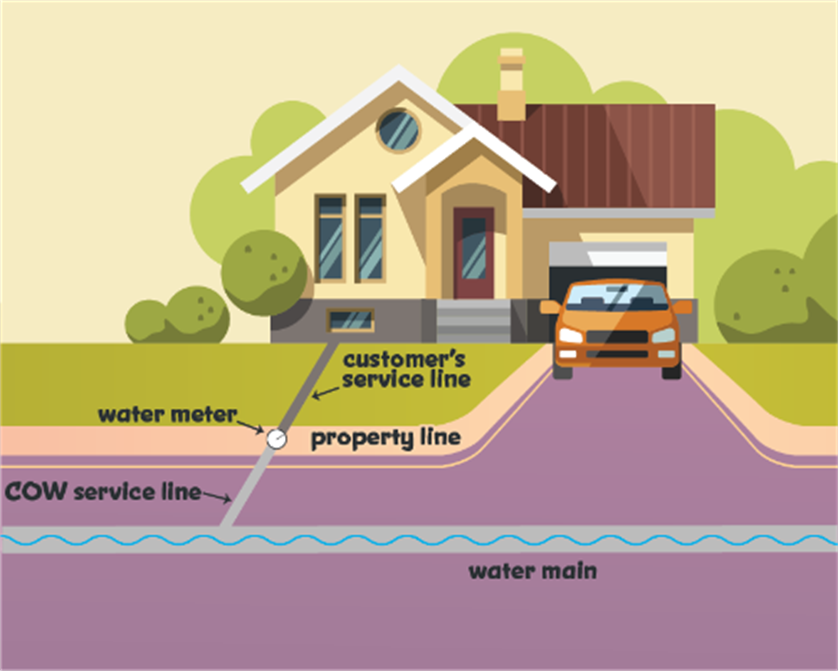Corrosion Control
Corrosive water can carry plumbing materials through the water system. By using chemicals to control the corrosivity of the water, lead exposure can be reduced.
The City of Waco has a corrosion control plan, as part of the Lead and Copper Rule. Raising the pH of the water creates scale in the pipes. The scale reduces the amount of plumbing material that might dissolve in the water.
Service Line Inventory
As part of the current Lead and Copper Rule, the City of Waco has announced a plan to take inventory of over 50,000 service lines. Based on the identifications, the city will build a database that will be available to the public.
The project began March 2023 and is estimated to be completed October 2024. The work is done by billing cycles, and residents are alerted in their bills when the inventory will begin in their areas.
The City of Waco does not have information about the type of materials used in private plumbing inside homes and businesses. Customers who want to investigate their own plumbing can hire a licensed plumber to perform an inspection.
 '
'
Above: The illustration shows ownership of the portions of service lines
How to identify your service line type
Use a flathead screwdriver to scrape a small area on the pipe.
- If the scraped area is the color of a penny, your service line is copper.
- If the scraped area remains a dull gray, your service line is galvanized steel.
- If the scraped area is shiny and silver, your service line is lead.
You can also check if your service line is magnetic. A magnet will not stick to copper or lead, only galvanized steel.
Customers can self-report their service line materials via the MyWaco app.
Service Line Replacement
The City of Waco has been replacing lead service lines that are discovered through normal maintenance and repairs. The City has no known lead service lines.
Replacement of customer service lines is the responsibility of the customer. There is income-based assistance available through the city’s Lead is Preventable Program (LIPP), a program provided by the Housing and Community Development Department.
Customer Notification
If a lead service line is found, on either the city or customer side, property owners and tenants will be notified by letter.
Removing lead service lines can create a short-term increased lead risk. Customers whose lines are being replaced will also be provided a water filter pitcher and instructions to further decrease the potential lead exposure.
Customers who are considered at-risk for lead in their drinking water will have opportunities to get their water tested for free.
Day Cares & Schools
Testing for lead in water is required at all registered day cares and schools up to eighth grade. This testing will involve training school and day care staff to take samples from inside the buildings, which will then be tested and reported as required by the Texas Commission on Environmental Quality. Rules and guidelines continue to change and the city will continue to comply with the requirements as new information comes in.